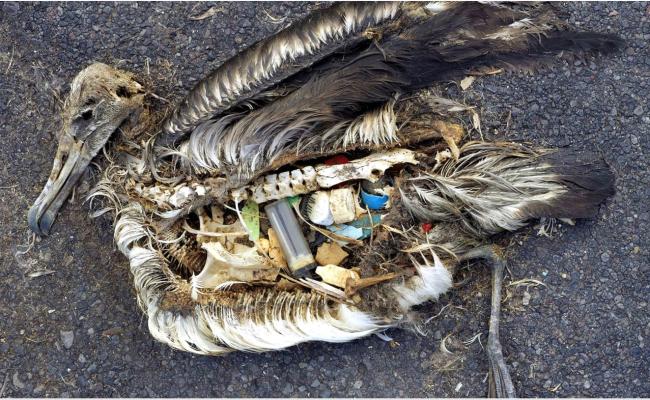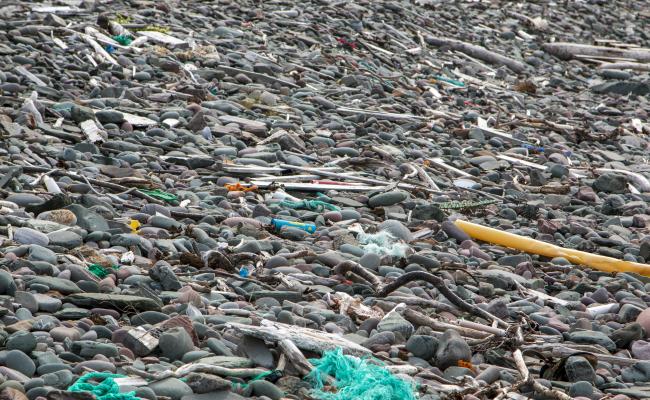Plastic Pollution From All Over the World on Svalbard Beaches, New Study Finds
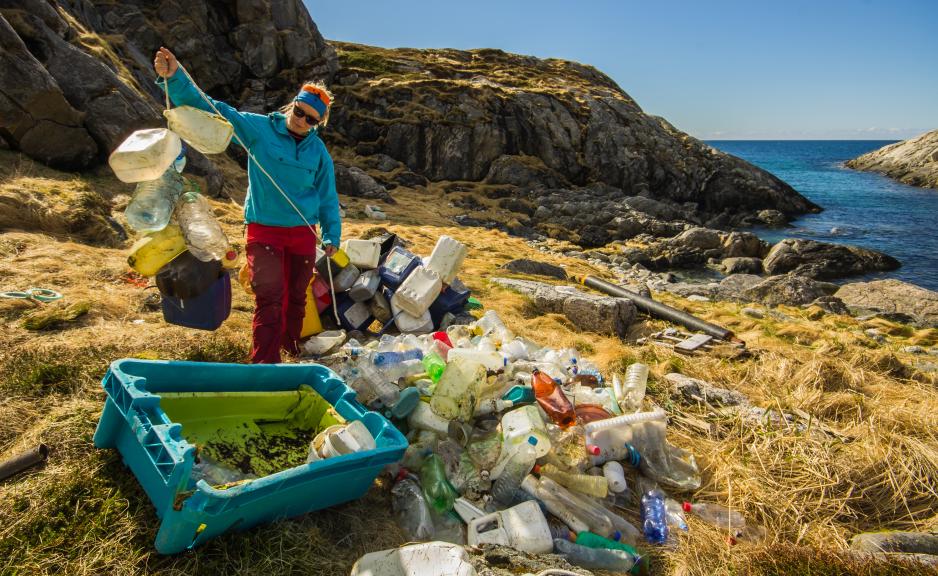
Marine litter, including foreign bottles & cans along Norway’s Arctic coastline outside Tromsø. (Source: Bo Eide under CC BY-NC-ND 2.0)
A five-year project relying on hundreds of tourists as “citizen scientists” to collect plastic debris on select Svalbard beaches highlights how the Arctic Ocean ecosystem is affected by pollution outside the region. More than a third of plastic pollution could be traced to countries outside the Arctic.
As part of a unique “citizen science” project scientists at Germany’s Alfred Wegener Institute (AWI) collected and analyzed plastic debris washed up on Svalbard beaches. The results show a globalized Arctic, even when it comes to the origin of plastic pollution, with trash originating in more than 25 countries, including some in the southern hemisphere.
The project worked closely with tour guiding companies organizing trips in and around the waters of Svalbard. Between 2016 and 2021 tourists, which the study calls “citizen scientists”, collected marine debris on 14 remote Arctic beaches on Spitsbergen.
Over that 5-year period tourists to the archipelago collected over 23,000 items of trash on those 14 local beaches combining for 1,620 kilograms.
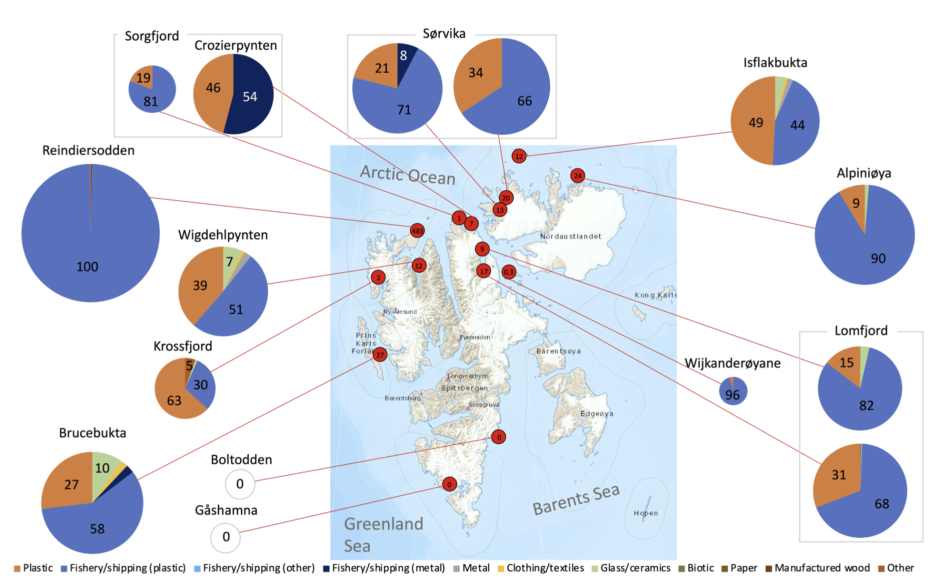
Map of all locations of beach debris surveys. (Source: Anna Natalie Meyer, Birgit Lutz, and Melanie Bergmann)
“In 2016 we began working with citizens to investigate the composition of plastic debris on Arctic shores,” says AWI researcher Dr Melanie Bergmann, who came up with the idea for the project together with the tour guide and writer Birgit Lutz.
“We have now gone a step further and investigated where the debris that had still marks, labels or imprints came from,” Bergmann explains.
“Our analysis found that, at 80 percent, the clear majority was plastic debris,” adds first author Anna Natalie Meyer from the AWI.
Local and global sources
The study confirmed what previous research and computer models had suggested, that plastic pollution comes to the Arctic from both local and remote sources.
This comparatively high percentage is not so surprising.
“Locally, plastic debris finds its way to the ocean from ships and from Arctic communities with poor waste management systems. As for remote sources, plastic debris and microplastic are transported to the Arctic Ocean from the Atlantic, North Sea and North Pacific by various rivers and ocean currents,” explains Meyer.
The study’s authors identified trash from as far as Brazil, China and the United states.
Due to geographic proximity, Russia and Norway account for the two largest shares of debris with 32 percent and 16 percent respectively. The third largest contributor is Germany with eight percent.
“Considering that Germany is the ‘European champ’ in terms of both plastic production and debris exports, this comparatively high percentage is not so surprising,” says Bergmann.
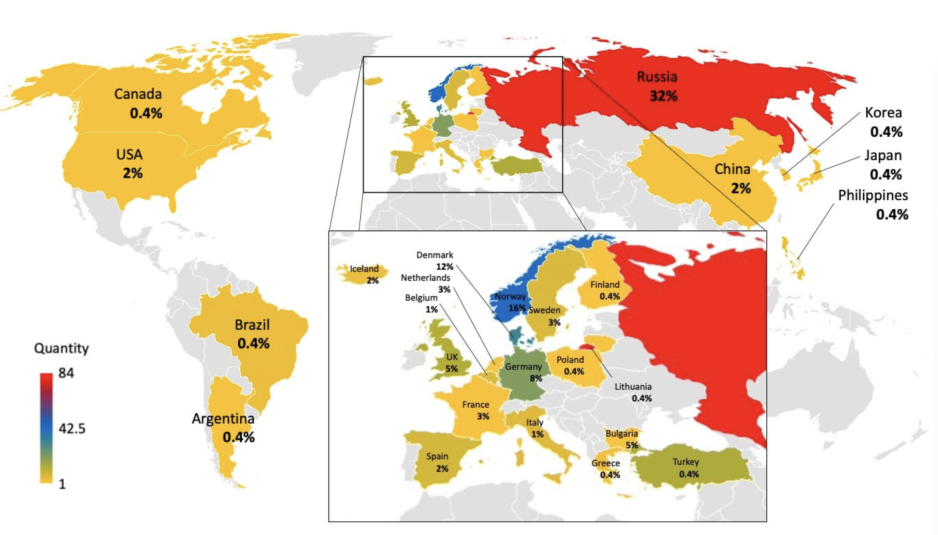
Origin of items depicted in a map. (Source: Anna Natalie Meyer, Birgit Lutz, and Melanie Bergmann)
All roads lead to the Arctic
The study complements previous work which looked at plastic debris at the sea surface and the ocean floors. The results suggest that much of the floating debris in the Arctic eventually collects on the region’s beaches, “making them a final sink” for plastic trash.
This pollution represents an additional challenge for the Arctic ecosystem, which already faces the impacts of a warming trend that is occurring four times faster than the global average rate, the study’s authors conclude.
Far away places affect the Arctic
The results of the study also highlight how the Arctic does not exist in isolation and how actions or, in this case inactions, by states far removed from the region can have a profound impact on its ecosystem.
“Our results highlight that even prosperous industrialized countries, which can afford better waste management, make significant contributions to the pollution of remote ecosystems like the Arctic,” says AWI expert Bergmann.
Solutions to the problem must contain both better local waste management, including on ships and fishing vessels, as well as a reduction of global plastic production. The authors explain that 11 percent of plastics produced in the world end up in waterways, which eventually flow into the global oceans.


